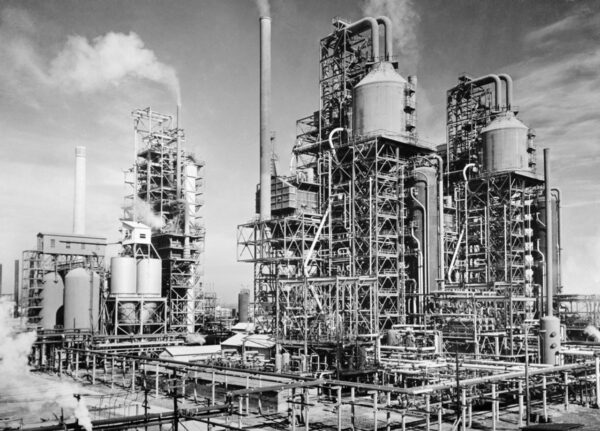History of Petroleum Refining

History of Petroleum Refining
Ever since the first oil well was successfully drilled back in 1858, people have been refining crude petroleum since petroleum is refined into gasoline, that we use in order to fuel engines as well as a wide range of machines that drive our societies.
And while the history of petroleum refining has predominantly North American origins, there have been advancements made in all corners of the world. Today we are exploring some of fascinating history, uncovering how it all connects in our modern day and age. Enjoy!
The First Steps
The first oil wells were drilled in Canada and the U.S., in the mid 19th century. While people had previously been using crude oil before this time, 1858 marked the date where the availability opened up a wealth of possibilities for consumers and industries.
These first oil wells extracted what is known as “rock oil”, a product that had to be refined by distillation techniques, where the purpose was to heat up the petroleum in order to separate it into its various components based on their boiling points.
This initial refining process yielded products such as kerosene, which gained popularity as a reliable source of lighting, during a time when alternatives like whale oil were becoming increasingly scarce.
Throughout the next 30-40 years, the techniques or oil well drilling and petroleum refining spread like a wildfire across the world, leading in many different refineries being built in various countries. As David Goodnight of Austin, TX remarks, this rapid expansion marked a crucial phase in the globalization of the oil industry.
The Era of Automobiles and Airplanes
By the early 20th century, the main use of petroleum switched from kerosene to gasoline, as individuals began buying cars en masse. This led to new techniques being developed at the refineries, such as thermal cracking that performed better in the car engines, compared to traditionally distilled petroleum.
Around the same time, the Wright brothers developed the first successful planes, and once more, the refineries needed new methods to create fuel suitable for airplane engines. Thus the refining process became increasingly intricate, involving multiple steps such as catalytic cracking, reforming, and hydrotreating.
These advancements not only improved the efficiency of petroleum processing but also enabled the production of a broader range of products, including aviation fuels, lubricants, and petrochemical feedstocks.
The Second World War and Beyond
Up through the 1930’s and during the Second World War, the industry saw a massive boom. More and more people bought cars to drive, more airlines were established, and the war also required a large use of fuel for the efforts on both sides.
This unprecedented scale of consumption placed immense pressure on the industry to produce enough fuel to support military operations. David Goodnight of Austin, TX explains that as a result, refineries worked tirelessly to increase output and efficiency. More off-shore oil rigs were being built, and more inland areas explored as well.
Not long before the Second World War began, the first jet airplane was developed. And over the next 10-20 years, the technology was improved to the point where the need for jet fuel became increasingly large, leading to a substantial shift in the types of refined products the petroleum industry was focused on.
Jet fuel was also produced from petroleum, through processes like distillation and hydrocracking. The distillation process separates crude oil into various fractions based on boiling points. And hydrocracking, in the presence of hydrogen, breaks down heavier hydrocarbons into lighter ones suitable for jet fuel, enhancing its quality and performance.
In the 70’s and 80’s, mankind witnessed the rise of more sophisticated refining techniques, including catalytic reforming, isomerization, and fluid catalytic cracking, enabling the production of cleaner and higher-octane fuels.
And amid growing environmental awareness, stringent regulations were also introduced at state and government levels, in order to address air and water pollution, leading to the development of cleaner refining processes and the adoption of emission-reduction technologies.







